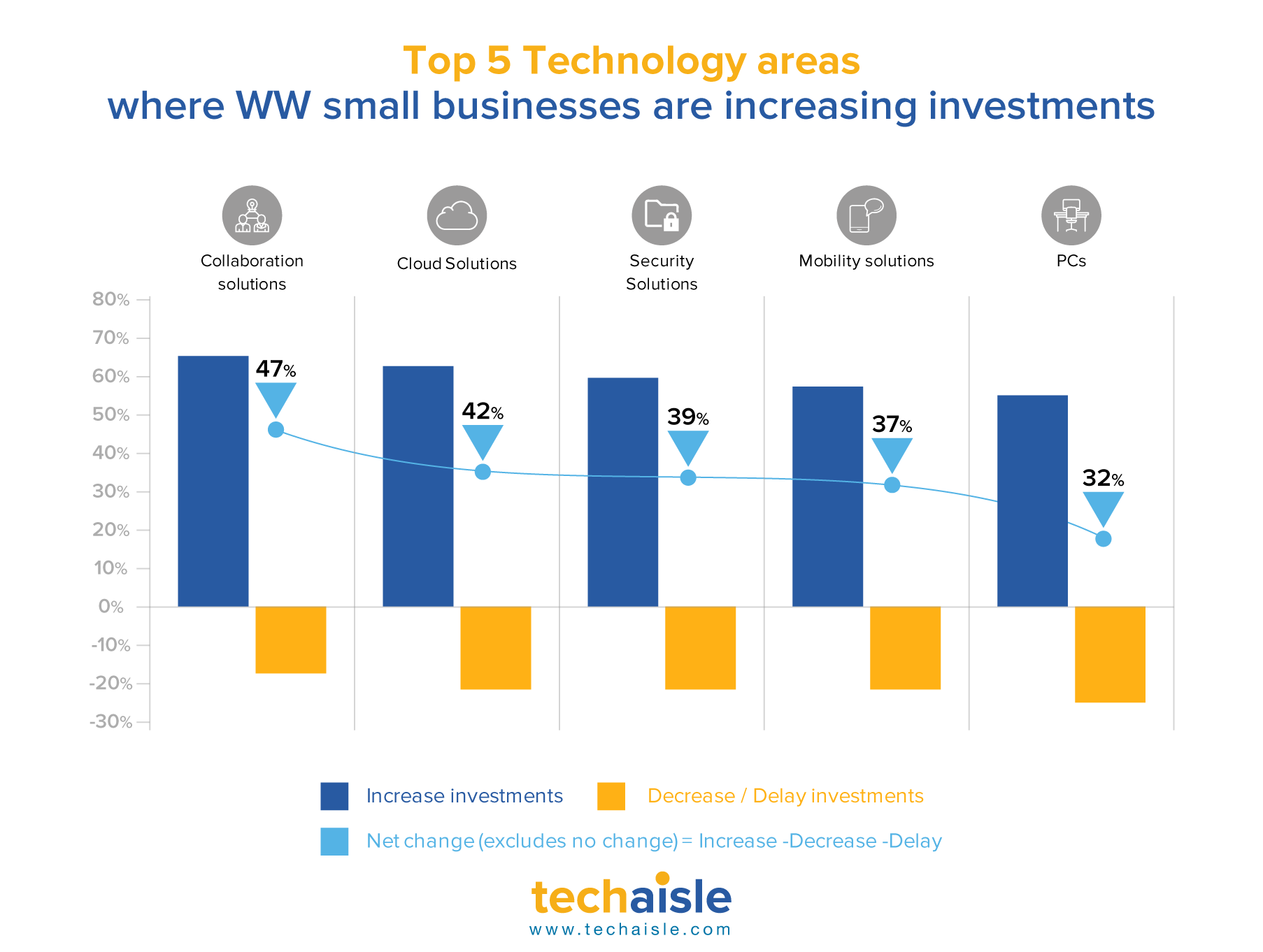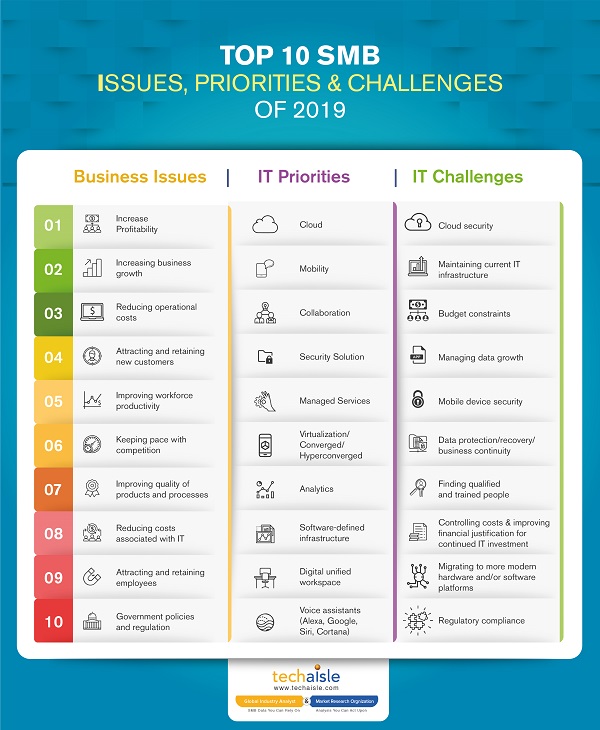Techaisle's latest SMB and Midmarket Digital transformation adoption trends research shows that 37% of small businesses (1-99 employees) and 46% of midmarket firms (100-4999 employees) expedited their digital transformation efforts due to pandemic. On the flip side, 27% of SMBs (1-999 employees) slowed down their digital transformation to prioritize their business's essential aspects, such as revenue generation. 27% of upper midmarket firms (1000-4999 employees) either changed their approach to transformation or kept the same pace as before the pandemic.
Investment in digital transformation has been underway for several years and was poised to be an essential factor in the IT and business market in the early 2020s. The pandemic lent urgency to digital transformation – but having arrived in a hurry, the changes wrought in response to the pandemic do not appear to be leaving as abruptly.
The accelerated pace of transformation will result in US$1,163B worldwide spend on IT (excluding telecom services) by SMB and upper-midmarket firms in 2021.
Unlike many IT market terms, which tie to specific technologies or technology capabilities, digital transformation is most often used to indicate an amorphous state in which an organization can seamlessly deploy new digital capabilities that streamline current or next-step processes, eliminating the business friction.
Organizational restructuring to hasten pace of transformation
Generally, firms consider digital transformation as a proxy for process efficiency. For many years, it has been a management goal, embedded without a consistent set of steps and defined outcomes in the IT plans of a substantial majority of SMBs. The pandemic brought urgency to these plans: there are numerous anecdotal reports of IT leaders being told, "you know that three-year digital transformation plan? Can you deliver it in three months instead?" For the most part, these requests tended to have a minimal additional budget attached to them, generally came without requisitions for new IT staff. These requests reflected management's understanding that highly-automated processes are essential in a business environment where physical interactions are awkward or forbidden, adding necessity to efficiency as compelling reasons to invest in digital transformation.
To change the transformation pace, 17% of SMBs are restructuring their entire organizations, and 24% are creating new functions dedicated to digital transformation. The changes will be more pronounced in the midmarket and upper-midmarket firms, which are quickly putting together dedicated groups and departments to digitize, digitalize and transform their organizations. Nearly one-fifth of SMBs are relying on their employees to guide transformation initiatives.
Changing digital transformation drivers













